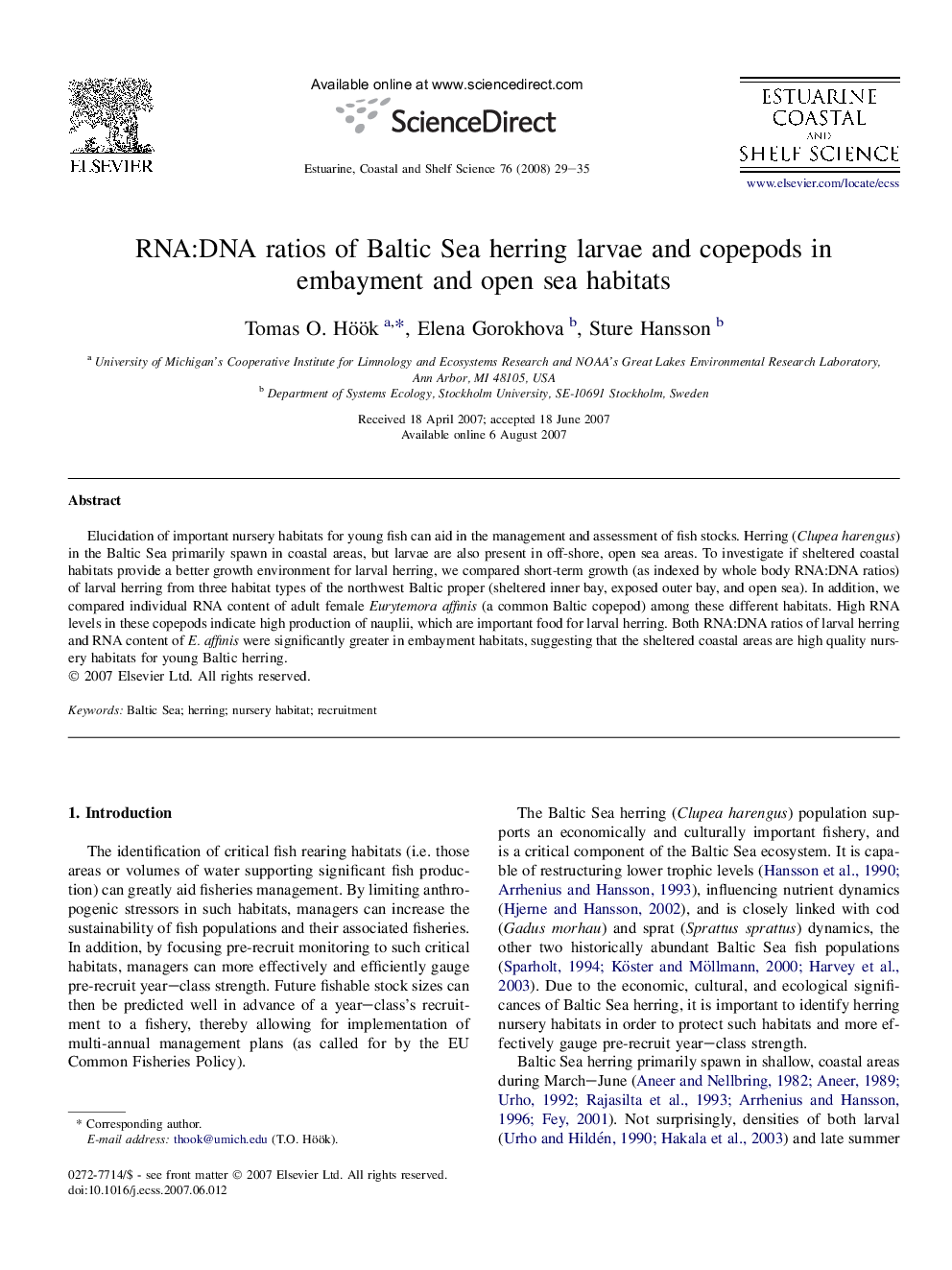| Article ID | Journal | Published Year | Pages | File Type |
|---|---|---|---|---|
| 4542263 | Estuarine, Coastal and Shelf Science | 2008 | 7 Pages |
Elucidation of important nursery habitats for young fish can aid in the management and assessment of fish stocks. Herring (Clupea harengus) in the Baltic Sea primarily spawn in coastal areas, but larvae are also present in off-shore, open sea areas. To investigate if sheltered coastal habitats provide a better growth environment for larval herring, we compared short-term growth (as indexed by whole body RNA:DNA ratios) of larval herring from three habitat types of the northwest Baltic proper (sheltered inner bay, exposed outer bay, and open sea). In addition, we compared individual RNA content of adult female Eurytemora affinis (a common Baltic copepod) among these different habitats. High RNA levels in these copepods indicate high production of nauplii, which are important food for larval herring. Both RNA:DNA ratios of larval herring and RNA content of E. affinis were significantly greater in embayment habitats, suggesting that the sheltered coastal areas are high quality nursery habitats for young Baltic herring.
